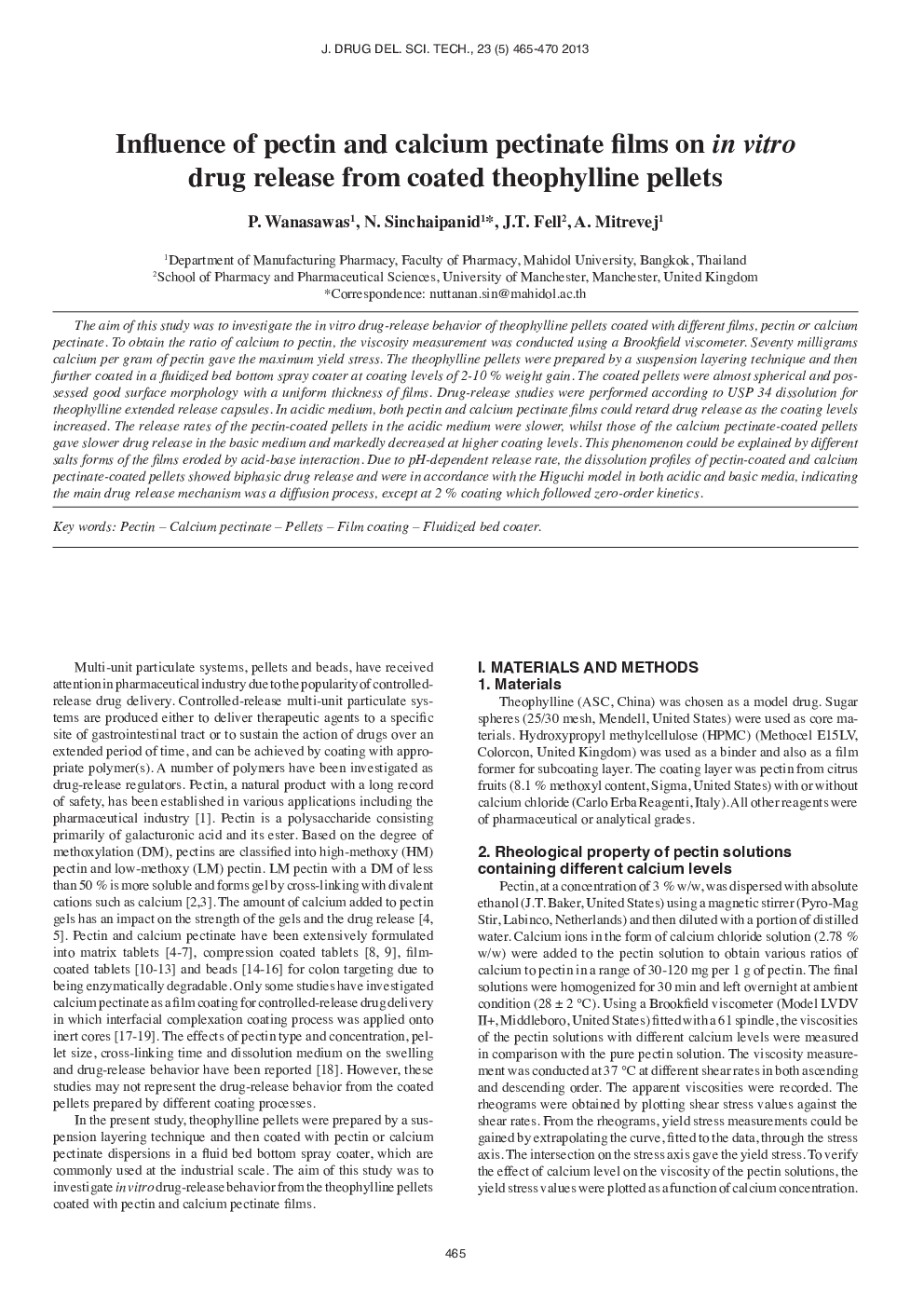| Article ID | Journal | Published Year | Pages | File Type |
|---|---|---|---|---|
| 2483480 | Journal of Drug Delivery Science and Technology | 2013 | 6 Pages |
The aim of this study was to investigate the in vitro drug-release behavior of theophylline pellets coated with différent films, pectin or calcium pectinate. To obtain the ratio of calcium to pectin, the viscosity measurement was conducted using a Brookfield viscometer. Seventy milligrams calcium per gram of pectin gave the maximum yield stress. The theophylline pellets were prepared by a suspension layering technique and then further coated in a fluidized bed bottom spray coater at coating levels of 2–10 % weight gain. The coated pellets were almost spherical and possessed good surface morphology with a uniform thickness of films. Drug-release studies were performed according to USP 34 dissolution for theophylline extended release capsules. In acidic medium, both pectin and calcium pectinate films could retard drug release as the coating levels increased. The release rates of the pectin-coated pellets in the acidic medium were slower, whilst those of the calcium pectinate-coated pellets gave slower drug release in the basic medium and markedly decreased at higher coating levels. This phenomenon could be explained by different salts forms of the films eroded by acid–base interaction. Due to pH-dependent release rate, the dissolution profiles of pectin-coated and calcium pectinate-coated pellets showed biphasic drug release and were in accordance with the Higuchi model in both acidic and basic media, indicating the main drug release mechanism was a diffusion process, except at 2 % coating which followed zero-order kinetics.
